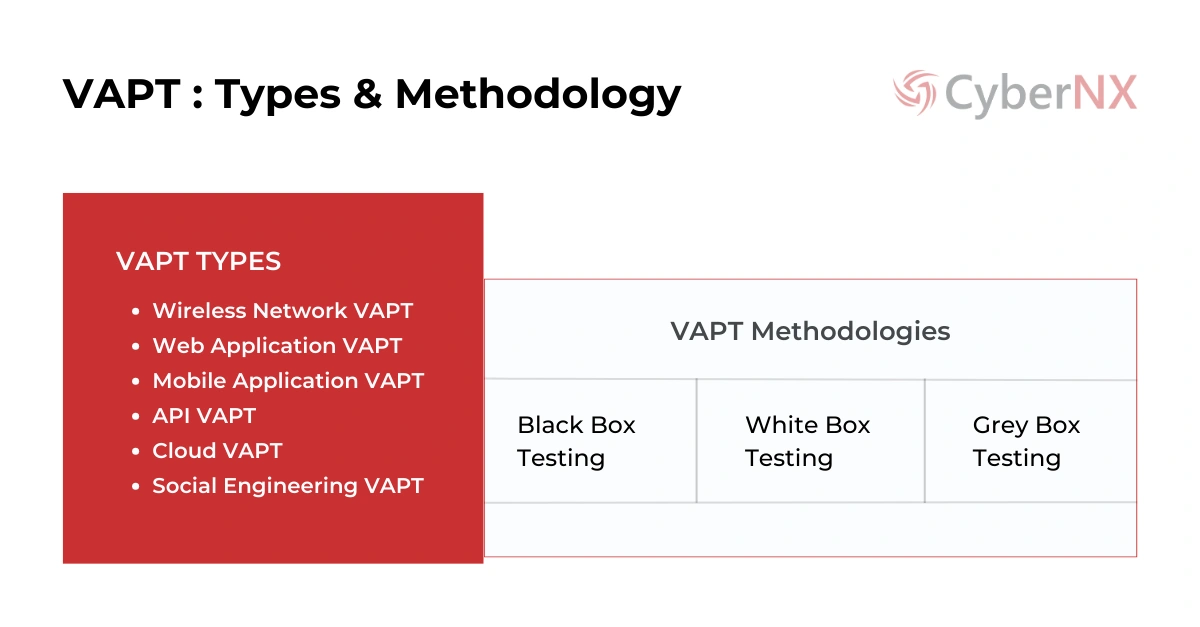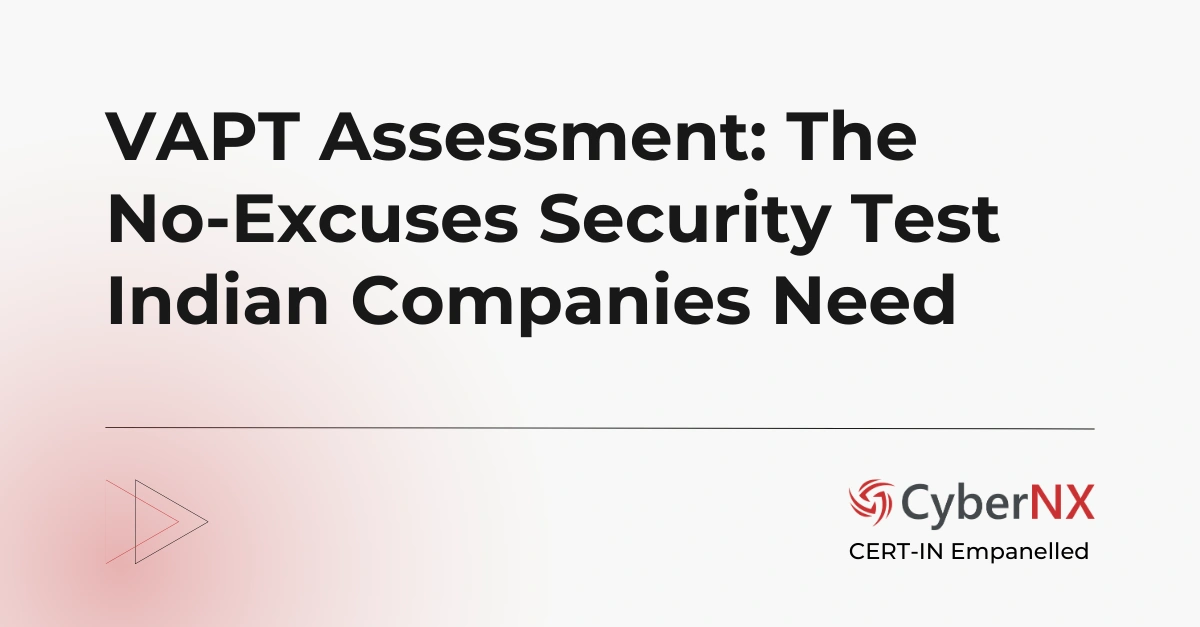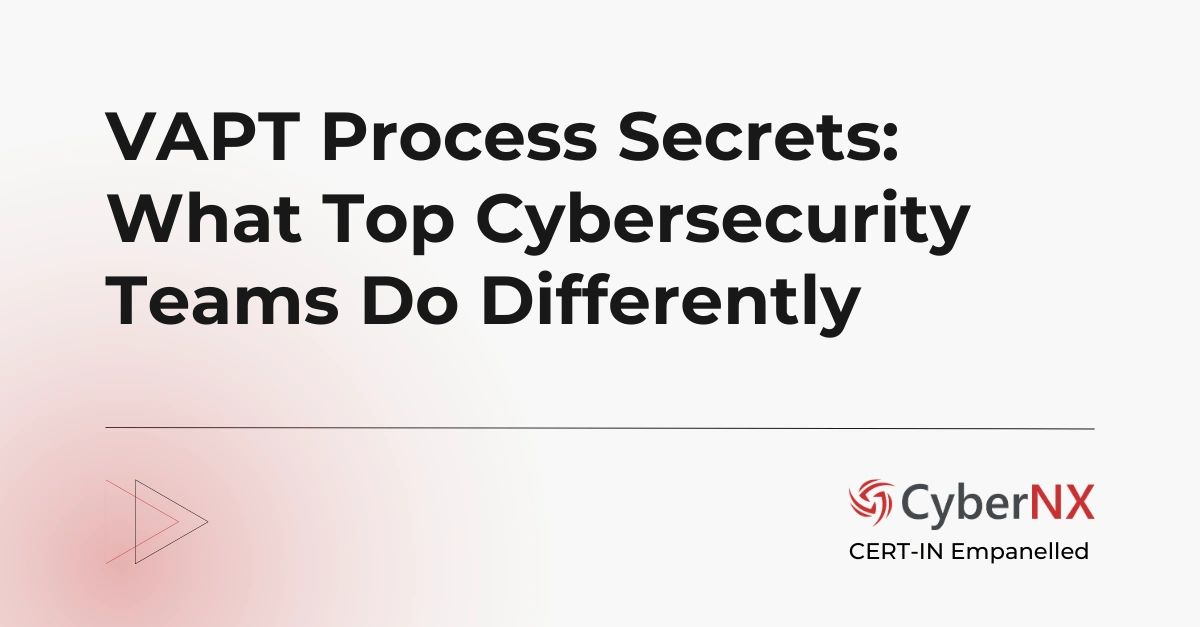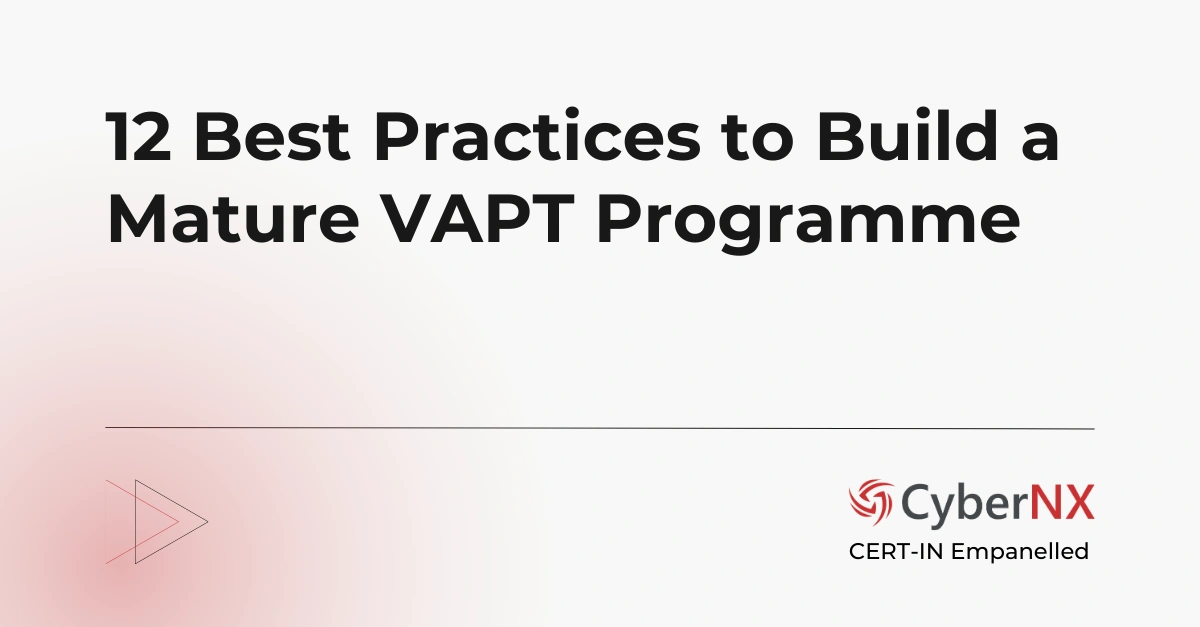Just like a regular health check-up is essential for your well-being, regular security assessments are crucial for the health of your IT systems. Vulnerability Assessment and Penetration Testing (VAPT) is your comprehensive health check for your digital infrastructure. This blog post examines the various types of VAPT tests – from checking your heart rate (network performance) to analyzing your blood work (web application security) – and explains the methodologies used to diagnose and treat any potential issues.
Types of VAPT Testing
Think of your IT infrastructure as a city. You have bustling commercial districts (web applications), residential neighborhoods (internal networks), and vital infrastructure (cloud services). Each area requires a different kind of security. VAPT provides specialized security assessments for each of these “districts.”
This breakdown explores the common types of VAPT “security patrols,” each designed to protect specific parts of your digital city:
- Wireless Network VAPT Testing: This type of test focuses on identifying vulnerabilities in your wireless network infrastructure. It assesses the security of Wi-Fi access points, encryption protocols, and other wireless components to prevent unauthorized access.
- Web Application VAPT Testing: Web applications are often a prime target for attackers. Web Application VAPT assesses the security of your web applications by looking for vulnerabilities like SQL injection, cross-site scripting (XSS), and authentication flaws.
- Mobile Application VAPT Testing: With the rise of mobile devices, mobile application security is critical. This type of VAPT tests the security of mobile apps on platforms like iOS and Android, checking for vulnerabilities in the app’s code, data storage, and communication with backend servers.
- API VAPT Testing: APIs (Application Programming Interfaces) are the backbone of modern software interactions. API VAPT focuses on the security of these interfaces, identifying vulnerabilities that could allow attackers to access sensitive data or disrupt services.
- Cloud VAPT Testing: As organizations migrate to the cloud, cloud security becomes paramount. Cloud VAPT assesses the security of cloud environments, including infrastructure, platforms, and applications, ensuring compliance with security best practices and identifying potential vulnerabilities.
- Social Engineering VAPT Testing: This type of testing evaluates the human element of security. It simulates social engineering attacks, such as phishing emails or pretexting, to assess employees’ susceptibility to manipulation and identify areas for security awareness training.
Curious about the tools behind VAPT? Explore our comprehensive VAPT Tools guide here!
What is VAPT Methodology? What are the Common Testing Methodologies?
Continuing with our city analogy, the type of VAPT determines which “district” we’re patrolling, but the VAPT methodology dictates how we conduct that patrol. Are we doing a quick drive-by (black box), a thorough inspection of every building (white box), or a balanced approach (grey box)?
Here’s a breakdown of the common VAPT methodologies, each representing a different tactical approach to security assessment:
- Black Box Testing: In this VAPT methodology, the testers have no prior knowledge of the target system’s internal workings. They simulate real-world attacks, relying on their skills and tools to discover vulnerabilities. This approach is valuable for mimicking external attackers.
- White Box Testing: Testers have full access to the target system’s source code, architecture, and configurations. This allows for a more in-depth analysis and can uncover vulnerabilities that might be missed in black box testing. This VAPT methodology ideal for developers and internal security teams.
- Grey Box Testing: This is a hybrid VAPT methodology where testers have partial knowledge of the target system. They might have access to documentation or some high-level information. This approach provides a balance between the realism of black box testing and the thoroughness of white box testing.
Want to know which testing method fits your security needs best? Read our in-depth comparison of Black Box vs White Box Penetration Testing.
Choosing the Right VAPT Methodology: A Strategic Decision
Selecting the appropriate VAPT methodology is a strategic decision that depends on several factors:
- Type of Application or Network: Some systems are better suited for certain methodologies. For example, web applications often benefit from a combination of black box and white box testing.
- Level of Access and Engagement: If you’re working with an external security firm, black box testing might be the most appropriate, while internal teams can leverage white box or grey box approaches.
- Industry Standards and Regulatory Compliance: Certain industries have specific requirements for VAPT methodologies. Ensure your chosen approach aligns with these standards.
Importance and Benefits of VAPT Testing
Every organization today, no matter how big or small, runs on digital systems. And every system – whether it’s a website, a payment gateway, or a cloud setup – has weak spots waiting to be found.
Vulnerability Assessment and Penetration Testing (VAPT) helps you find those weak spots before someone else (cybercriminals) does. It’s not about ticking a compliance box; it’s about knowing how secure your business truly is.
Here’s why VAPT testing matters:
- Finds what others miss: It digs deeper than automated scanners, revealing real-world attack paths that could put your data or reputation at risk.
- Gives you clarity, not chaos: Instead of a long list of technical flaws, VAPT testing prioritizes what actually needs fixing – saving time and resources.
- Protects what drives your business: Whether that’s customer information or proprietary data, VAPT ensures your core assets stay out of harm’s way.
- Builds confidence: When clients know you invest in regular VAPT testing, they see a partner who takes security seriously.
Simply put, VAPT testing helps you stay informed, stay secure, and stay in control – because the cost of not knowing your weaknesses is always higher.
Strengthening Your Security Posture with Strategic VAPT
VAPT is an indispensable component of a robust cybersecurity strategy. By understanding the different types of VAPT testing and methodologies used, you can tailor your security assessments to your specific needs and maximize their effectiveness. Choosing the right approach, combined with regular testing and prompt remediation, will significantly strengthen your security posture and protect your organization from evolving cyber threats. CyberNX Technologies, as a Cert-In empaneled VAPT provider, is ready to assist you in securing your business. Contact us today to discuss your VAPT requirements.
FAQS
Which type of VAPT is right for my organization?
The best type depends on your specific systems and applications. Web application VAPT is crucial for online businesses, while network VAPT is essential for organizations with complex network infrastructures. Cloud VAPT is a must for cloud-based environments, and so on. A comprehensive strategy often involves a combination of types.
What are the advantages and disadvantages of Black Box, White Box, and Grey Box testing?
Black Box testing simulates real-world attacks but may miss internal vulnerabilities. White Box testing offers in-depth analysis but can be time-consuming. Grey Box testing provides a balance, leveraging some knowledge of the system for efficient testing.
How do I choose the right VAPT methodology?
The right methodology depends on factors like your budget, the level of access you can provide, and the type of system being tested. A combination of methodologies is often the most effective approach.
What is Social Engineering VAPT, and why is it important?
Social Engineering VAPT assesses the human element of security by simulating attacks like phishing. It’s crucial because employees can be the weakest link in your security chain. This type of testing helps identify areas where security awareness training is needed.






